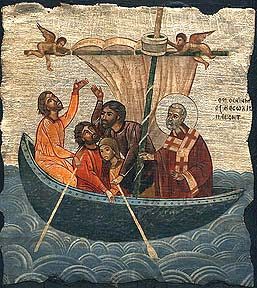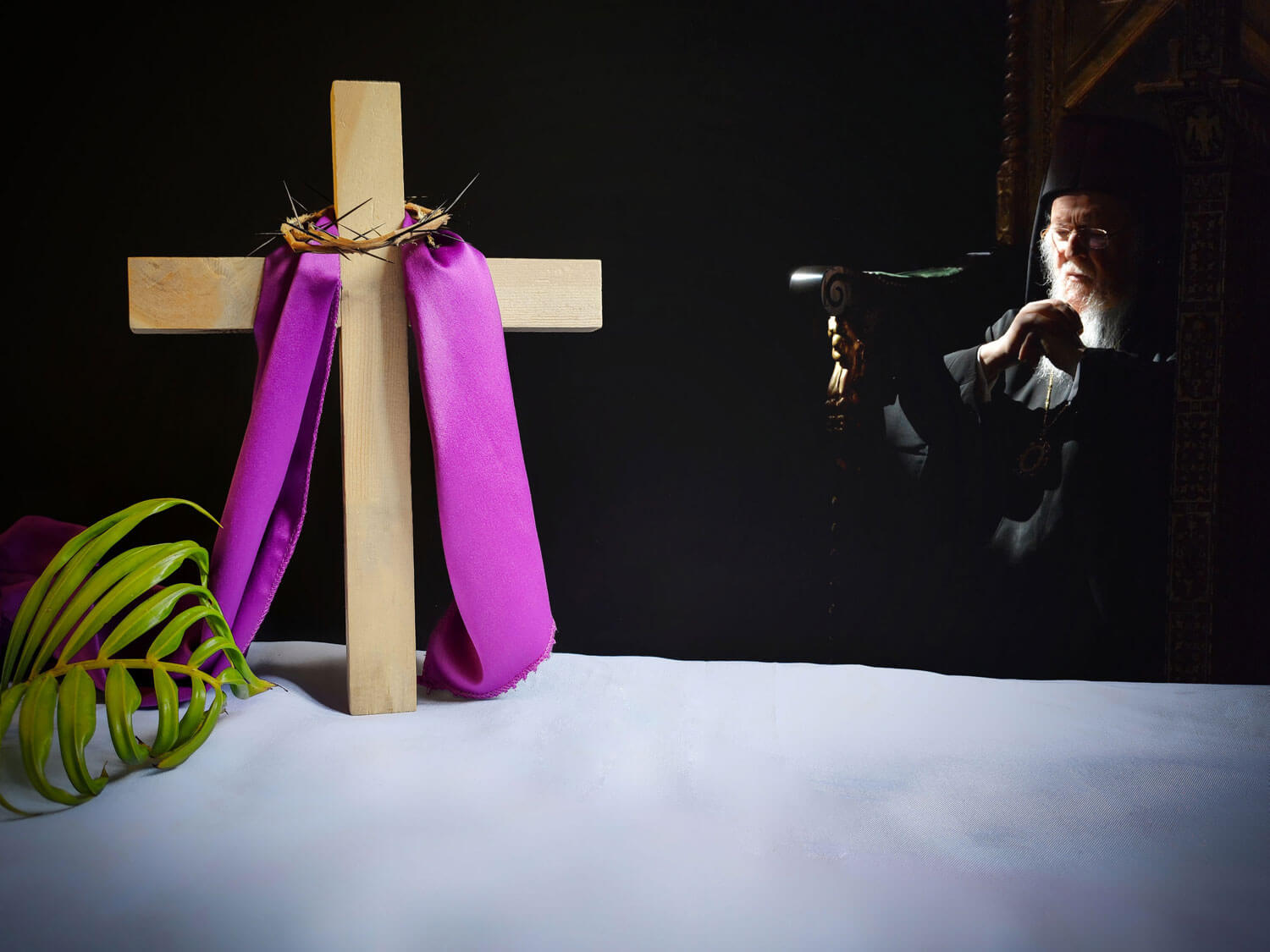St. Nicholas of Myra
Celebrated on December 6th
Troparion of Saint Nicholas
“The verity of your actions revealed you to your flock as a rule of faith, an icon of mildness, and a teacher of continence, O Father Bishop Nicholas; wherefore by humility you have achieved exaltation, and by poverty richness. Intercede with Christ to save our souls.”
Coming to the city of Myra when the clergy and people of the province were in session to elect a new bishop, St. Nicholas was indicated by God as the man they should choose. This was at the time of the persecutions at the beginning of the fourth century. “As he was the chief priest of the Christians of this town and preached the truths of the faith with a holy liberty, the divine Nicholas was seized by the magistrates. He was tortured, then chained and thrown into prison with many other Christians. But when the great and religious Constantine, chosen by God, assumed the imperial diadem of the Romans, the prisoners were released from their bonds and with them the illustrious Nicholas, who when he was set at liberty returned to Myra.”
St. Nicholas was zealous in his duties as bishop and took strong measures against paganism: and one of the temples that he destroyed was that of Artemis, and the evil spirits fled howling before him. He was the guardian of his people in temporal affairs as well. The governor Eustathius had taken a bribe to condemn to death three innocent men. At the time fixed for their execution Nicholas came to the place, stayed the hand of the executioner, and released the prisoners. Then he turned to Eustathius and did not cease to reproach him until he admitted his crime and expressed his penitence. There were present on this occasion three imperial officers who were on their way to duty in Phrygia. Later, when they were back again on Constantinople, the jealousy of the prefect Ablavius caused them to be imprisoned on false charges and an order for their death was procured from Emperor Constantine. That night St. Nicholas appeared in a dream to Constantine, and told him with threats to release the three innocent men, and Ablavius experienced the same thing. In the morning the emperor and the prefect compared notes, and the three condemned men were sent for and questioned. When he heard that they had called upon the name of the Nicholas of Myra who had appeared to him, Constantine set them free, and sent them to the bishop with a letter asking him not to threaten him anymore, but to pray for the peace of the world.
St. Nicholas died and was buried in his episcopal city of Myra, and by the time of Justinian there was a basilica built in his honor at Constantinople. When Myra and its great shrine finally passed into the hands of the Saracens, there was a great competition for his relics between two cities of Italy, Bari and Venice. Bari won and the relics were carried off under the noses of the lawful Greek custodians and their Mohammedan masters, and on May 9, 1087, were safely landed at Bari. At Myra, “the venerable body of the bishop, embalmed as it was in the good ointments of virtue, exuded a sweet-smelling ‘myrrh,’ which kept it from corruption and proved a health-giving remedy against sickness, to the glory of him who had glorified Jesus Christ, our true God.” The transfer of the relics did not interrupt this phenomenon, and the “manna of St. Nicholas” is said to flow to this day.
He is venerated as the patron saint of several classes of people, especially, in the east, of sailors and, in the west, of children. The first of these patronages is due to the legend that, during his lifetime, he appeared to storm-tossed mariners who had invoked his aid off the coast of Lycia, and brought them safely to port. Sailors in the Aegean and Ionian seas, following a common eastern custom, had their “star of St. Nicholas” and wished one another a good voyage in the phrase “May St. Nicholas hold the tiller.” The legend of the “three children” gave rise to his patronage of children and various observance, secular and ecclesiastical, especially the giving of presents in his name at Christmas time. The deliverance of the three imperial officers naturally cause St. Nicholas to be invoked by and on behalf of prisoners and captives, and many miracles of his intervention are recorded in the middle ages.
” St. Nicholas, when discussed in his true form, truly gives the meaning of Christmas. This great wonder-worker humbled himself before his God and before mankind, by spreading joy to those less fortunate than him. He is a great example of how we, as Christians, should treat one another. Remember St. Nicholas during this Nativity season as a giver of Christ to all people. May his spirit and story show you all the true meaning of Christ’s birth: to save mankind!”
Written by Paul Fuller




